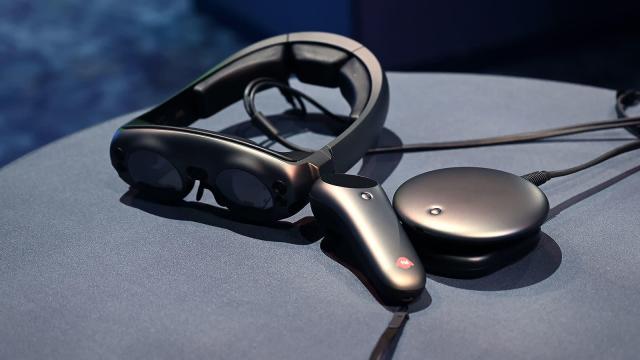When it comes to virtual reality tech, you typically fall into one of two camps. Either you love the sci-fi concept of snapping on a headset and suddenly being transported into an immersive, three-dimensional universe, or you’re a reasonable person who finds these same headsets vomit-inducing, awkward to wear, and downright butt-ugly.
At least for the time being, it looks like my fellow hardware-haters have won out. According to a blog post by Magic Leap CEO Rory Abovitz published yesterday afternoon, the arguably overhyped mixed-reality startup has made the “difficult decision” to lay off what’s reportedly roughly half of its workforce as the company shifts from something consumer-facing into one that’s used by corporate overlords. And honestly, while layoffs are wretched no matter what, I’m 100 per cent on board with the idea of corporations fully embracing virtual reality.
[referenced url=” thumb=” title=” excerpt=”]
To be fair, corporate-centric tech is something that Magic Leap’s dabbled with a bit leading up until now. This past holiday season, the company officially rolled out the Magic Leap Enterprise Suite, a roughly $US3,000 ($4,746) toolkit meant to help white-collar workers across a buffet of industries collaborate on a virtual plane, kind of like an upgrade to the teleconferencing software a lot of these same workforces are using right now.
That’s the thing about headsets like the ones hawked by Magic Leap and others in the space, like Facebook, Google, and Microsoft: While their headgear might be too expensive and impractical for your average run-of-the-mill gamer, that same tech is already changing the way major corporations like U.S. chain store Walmart train tens of thousands of employees, and changing the way troops are training in the U.S. military. The uptick in adoption in industries like these is why some analysts project that the enterprise appetite for virtual reality tech is about to hit an estimated $US4.3 ($7) billion dollars by 2023, swallowing more than a quarter of what’s shaping up to be a nearly $US15 ($24) billion dollar market around the same period.
Granted, the bulk of spending on these sorts of high-tech goggles is still largely coming out of the pockets of consumers chasing some kind of sci-fi-based gaming high, but that’s a market that’s drastically plummeted over the past year, even as enterprise adoption continues to climb. And honestly, if these corporations want these ugly-arse headsets so bad, then I say they can keep them.
